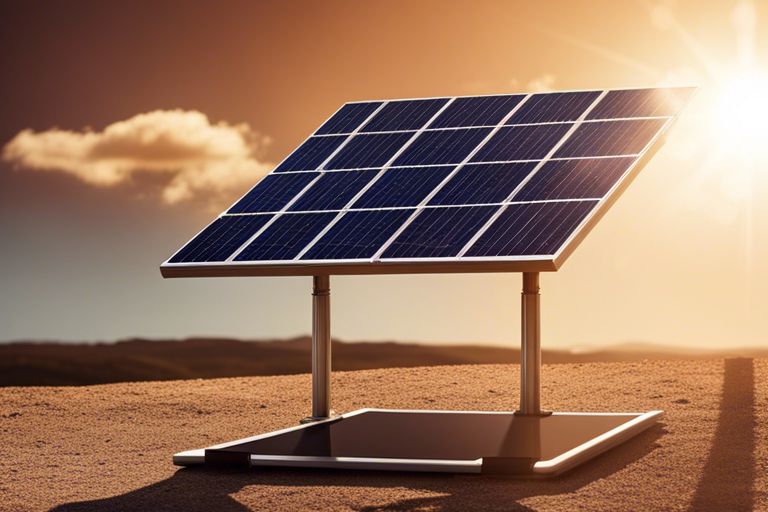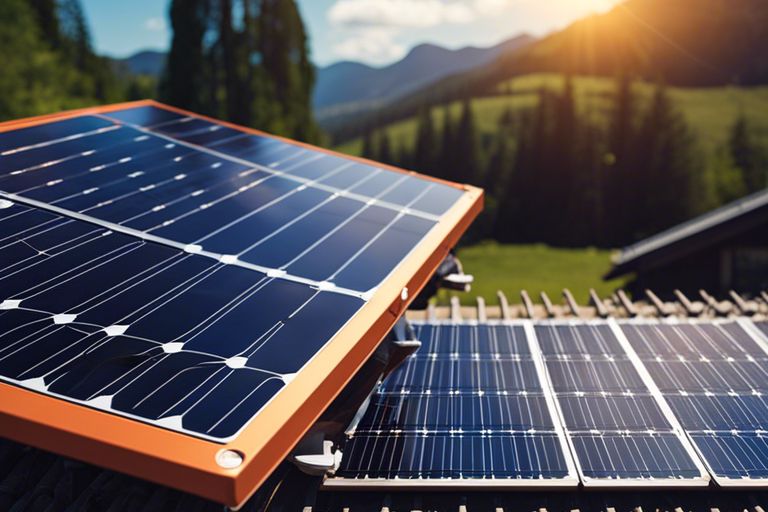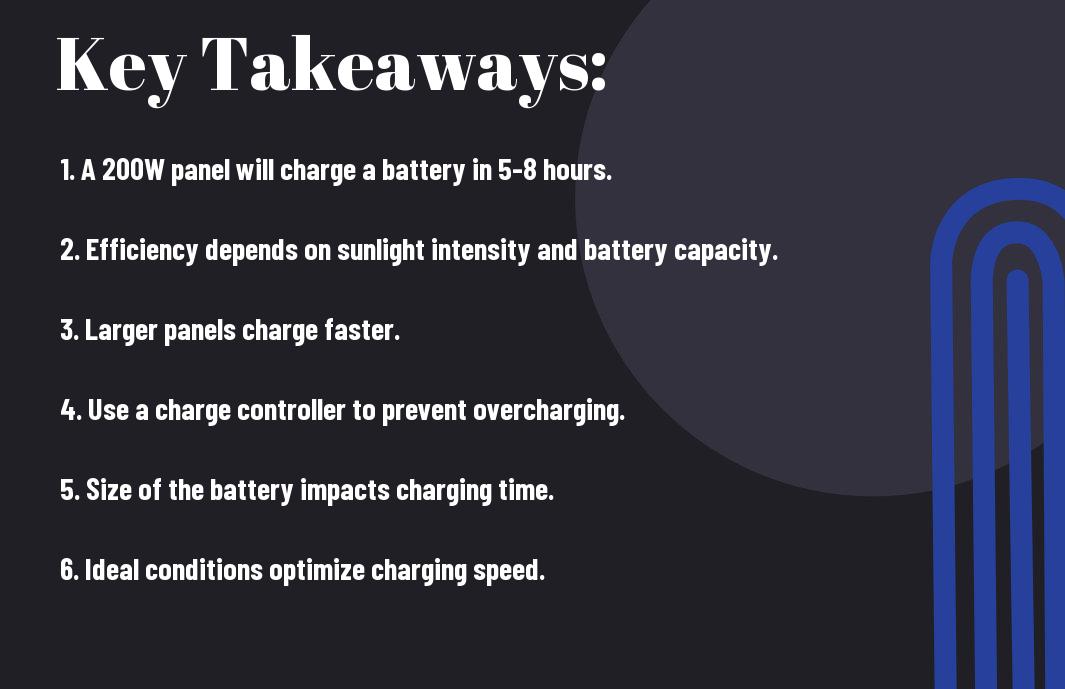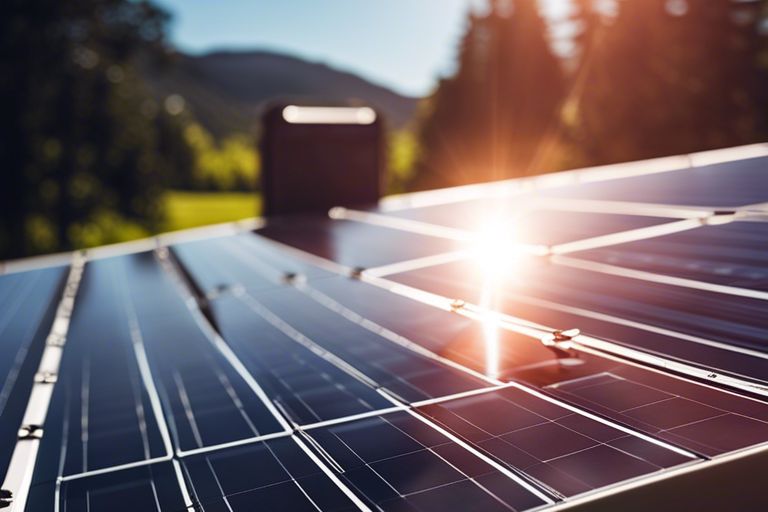Many wonder how long it takes to charge a battery using a 200-watt solar panel. The answer to this question can depend on various factors. Factors such as the capacity of the battery, the amount of sunlight the panel receives, and the efficiency of the charging process all play a role in determining the charging time. If you are seeking a more precise answer to your specific setup using a 200W solar panel and a 12/70Ah battery, you can find out by using this helpful Quora discussion.
Key Takeaways:
- Charging time: A 200-watt solar panel can charge a battery at a rate of around 10-20 amps per hour, which means it can charge a typical 12V battery in approximately 5-10 hours.
- Efficiency: The actual charging time can vary based on factors such as weather conditions, angle of sunlight, and battery capacity, so it’s important to consider these variables for accurate estimates.
- Usage: Understanding the charging time of a solar panel is crucial for planning and optimizing energy usage, especially for off-grid applications or during power outages.
Solar Panel Basics
What is a 200-watt solar panel?
While you may have heard about solar panels, you might be wondering what a 200-watt solar panel specifically refers to. An individual solar panel is rated by how much power it can produce under standard test conditions. In this case, a 200-watt solar panel can produce up to 200 watts of power when the sun is shining directly on it. This power output can vary depending on factors like sunlight intensity and panel orientation.
How does a solar panel work?
Panel technology, such as that of a 200-watt solar panel, functions by converting sunlight into electricity through the use of photovoltaic cells. These cells are made of semiconductor materials, commonly silicon, that generate an electric current when exposed to sunlight. The electrons in the material are energized by photons from the sunlight, creating an electric flow that can be harnessed as usable power.
A solar panel consists of multiple photovoltaic cells connected together, allowing them to work in unison to produce more electricity. As sunlight hits the panel, each cell generates its own electric current, which is then combined to power homes, appliances, or charge batteries.

Battery Charging Fundamentals
You need to understand the basics of battery charging to effectively utilize your 200-watt solar panel. This knowledge will help you optimize the charging process and extend the lifespan of your batteries.
Types of batteries and their charging requirements
- Lead-acid batteries: These batteries require a specific voltage range for charging. Overcharging or undercharging can significantly reduce their lifespan.
- Lithium-ion batteries: These batteries are more sensitive to overcharging than lead-acid batteries. They require a dedicated charging system to prevent any damage.
| Requirements | Lead-acid batteries |
| Voltage | 12V – 14.8V |
| Charging Current | 10% of battery capacity (e.g., 10A for a 100Ah battery) |
This table outlines the basic charging requirements for lead-acid batteries. Make sure to follow these guidelines to ensure the longevity of your batteries.
Factors affecting battery charging time
- Battery capacity: The larger the battery capacity, the longer it will take to charge.
- Solar panel wattage: A 200-watt solar panel can charge batteries faster than a lower wattage panel.
On average, a 200-watt solar panel can charge a 100Ah battery from 0% to 100% in approximately 5-8 hours, depending on various factors such as sunlight intensity and battery efficiency. Any deviations from these factors can affect the charging time. For instance, using a higher wattage panel or a more efficient battery charger can reduce the charging time significantly.
Calculating Charging Time
Theoretical calculations: wattage, voltage, and ampere-hours
To calculate the charging time of a battery using a 200-watt solar panel, you need to consider the wattage output of the panel, the voltage of the battery, and the capacity of the battery in ampere-hours (Ah). The formula to calculate charging time is: Time (hours) = Battery capacity (Ah) / Solar panel wattage.
For example, if you have a 100Ah battery and a 200-watt solar panel, the theoretical charging time would be 100Ah / 200W = 0.5 hours, or 30 minutes. However, this calculation is an ideal scenario and doesn’t take into account real-world factors that may affect charging time.
Real-world considerations: efficiency, temperature, and shading
An important factor to consider when calculating charging time is the efficiency of the solar panel, which can vary depending on the quality of the panel and external factors such as temperature and shading. In real-world conditions, the actual charging time may be longer than the theoretical calculation due to these factors.
| Factors | Effects |
| Efficiency | Lower efficiency leads to longer charging times. |
| Temperature | High temperatures can reduce panel efficiency and increase charging time. |
| Shading | Shading on the panel can significantly impact charging performance. |
With these real-world considerations in mind, it’s important to factor in potential inefficiencies when estimating the charging time of a battery using a 200-watt solar panel.
Charging Scenarios
Charging a small battery (e.g., phone or laptop)
Keep in mind that charging a small battery, such as that of a phone or laptop, with a 200-watt solar panel can be quite efficient. On a sunny day, you can expect to fully charge these devices in a relatively short amount of time. Since small batteries have lower capacities, the 200-watt solar panel can quickly replenish them, allowing you to stay connected wherever you are.
Charging a medium-sized battery (e.g., power tool or camping equipment)
Power up your medium-sized batteries, like those found in power tools or camping equipment, using a 200-watt solar panel. The time it takes to charge these batteries will depend on their capacity and the amount of available sunlight. With a steady supply of solar energy, you can keep your tools or camping gear ready for your next adventure without relying on grid power.
This scenario allows you to be more self-sufficient, especially when you’re on the go and don’t have access to traditional charging outlets. By harnessing solar power, you can charge your medium-sized batteries efficiently and reduce your reliance on non-renewable energy sources.
Charging a large battery (e.g., electric vehicle or off-grid system)
Power your large batteries, such as those in electric vehicles or off-grid systems, with a 200-watt solar panel. Charging these batteries may take longer due to their higher capacities, but with consistent exposure to sunlight, you can replenish them over time. By utilizing solar energy for these purposes, you can reduce your carbon footprint and embrace a more sustainable energy solution.
When charging a large battery with a 200-watt solar panel, it’s important to have a system that efficiently converts solar energy into usable power. You can optimize the charging process by ensuring your setup is designed to make the most of the available sunlight, allowing you to charge your large battery effectively.
Factors Affecting Charging Speed
Despite the efficiency of a 200-watt solar panel, several factors can affect the speed at which your battery charges. Understanding these variables can help you optimize the charging process for your specific setup.
Solar panel angle and orientation
- The angle and orientation of your solar panel can significantly impact its charging efficiency. Placing your panel at the optimal angle and facing it towards the sun can maximize the amount of sunlight it receives, thus speeding up the charging process.
The position of your panel in relation to the sun throughout the day can affect how much sunlight it captures. Ensuring that the panel is angled correctly and facing the sun directly can help you get the most out of your solar setup.
Weather conditions: sunlight, temperature, and humidity
Factors
| Sunlight | Temperature and Humidity |
| The intensity of sunlight directly affects the charging speed of your battery. Cloudy days or partial shading can reduce the amount of sunlight reaching the panel, slowing down the charging process. | The temperature and humidity levels can also impact the efficiency of your solar panel. Extreme temperatures can affect the performance of the panel, while high humidity levels may increase resistance and reduce charging speed. |
On average, a solar panel operates at peak efficiency in moderate temperatures and under direct sunlight. Monitoring weather conditions and adjusting your setup accordingly can help you maximize charging speed.
Battery health and age
- Factors such as the health and age of your battery can also influence the charging speed. A new and well-maintained battery will charge more efficiently compared to an older or degraded one.
Factors like the internal resistance of the battery and its overall capacity can affect how quickly it charges. Ensuring that your battery is in good condition and regularly maintained can help you achieve faster charging times.
Based on these factors, optimizing the angle and orientation of your solar panel, monitoring weather conditions, and maintaining your battery can all contribute to speeding up the charging process with a 200-watt solar panel. By understanding these variables, you can efficiently harness solar power to charge your battery in a timely manner.
Note, the more you pay attention to these factors and make necessary adjustments, the quicker and more effectively you can charge your battery using solar energy.

Optimizing Charging Time
Using a charge controller or regulator
Not using a charge controller can lead to overcharging and damaging your battery. A charge controller regulates the voltage and current coming from the solar panels to ensure your battery is charged efficiently and safely. By using a controller, you can optimize the charging time and prevent any potential harm to your battery.
Monitoring and adjusting charging parameters
Not monitoring and adjusting the charging parameters can affect the overall charging time of your battery. A good charge controller allows you to keep track of important metrics such as voltage, current, and temperature. By regularly monitoring and adjusting these parameters, you can fine-tune the charging process and potentially shorten the charging time for your battery.
Monitoring the charging process allows you to adjust settings as needed to maximize the efficiency of the charging cycle. By keeping an eye on the voltage and current levels, you can ensure that your battery is charging at the optimal rate, thereby reducing the overall time required to fully charge it.
Maintaining battery health through proper charging practices
Through proper charging practices, you can extend the lifespan of your battery and improve its overall performance. Charging your battery at the right voltage and current levels, and avoiding overcharging or deep discharging, can help maintain its health and efficiency over time. By following these best practices, you can ensure that your battery charges more effectively and lasts longer.
Understanding how to properly care for your battery is crucial for optimizing the charging time and ensuring its long-term functionality. By implementing the right charging techniques and habits, you can not only reduce the time it takes to charge your battery but also prolong its lifespan and maximize its performance.

Final Words
Following this guide on how long it takes to charge a battery with a 200-watt solar panel, you now have a better understanding of the factors that affect charging times. Do not forget, the efficiency of your solar panel, the capacity of your battery, and the amount of sunlight it receives all play a role in how quickly your battery can be charged. If you want to dive deeper into understanding how many amps a 200-watt solar panel produces, check out this informative article on 200 Watt Solar Panel How Many Amps?
By making informed decisions about your solar panel setup and battery capacity, you can optimize the charging process and harness the power of the sun to keep your devices running. With a little knowledge and planning, you can enjoy the benefits of sustainable energy and reliable power wherever you go. So, go ahead, set up your solar panel system, and embrace the convenience of charging your battery with the sun’s energy.
FAQ
Q: How long does it take to charge a battery with a 200-watt solar panel?
A: The time it takes to charge a battery with a 200-watt solar panel depends on various factors such as battery capacity, sun exposure, and efficiency of the charging system. On average, it can take anywhere from 4 to 8 hours to fully charge a standard 12V deep cycle battery with a 200-watt solar panel under optimal conditions.
Q: What factors can affect the charging time of a battery with a 200-watt solar panel?
A: Several factors can influence the charging time of a battery with a 200-watt solar panel. These include the capacity and condition of the battery, the angle and position of the solar panel in relation to the sun, the weather conditions, the efficiency of the charge controller and wiring, and any shading or obstructions that may affect sunlight exposure.
Q: How can I optimize the charging time of my battery with a 200-watt solar panel?
A: To improve the charging time of your battery with a 200-watt solar panel, you can consider the following tips: ensure the solar panel is placed in direct sunlight with minimal shading, use a charge controller to regulate the charging process efficiently, keep the battery in good condition and at an appropriate temperature, and use appropriate wiring and connections to minimize energy loss during the charging process.
